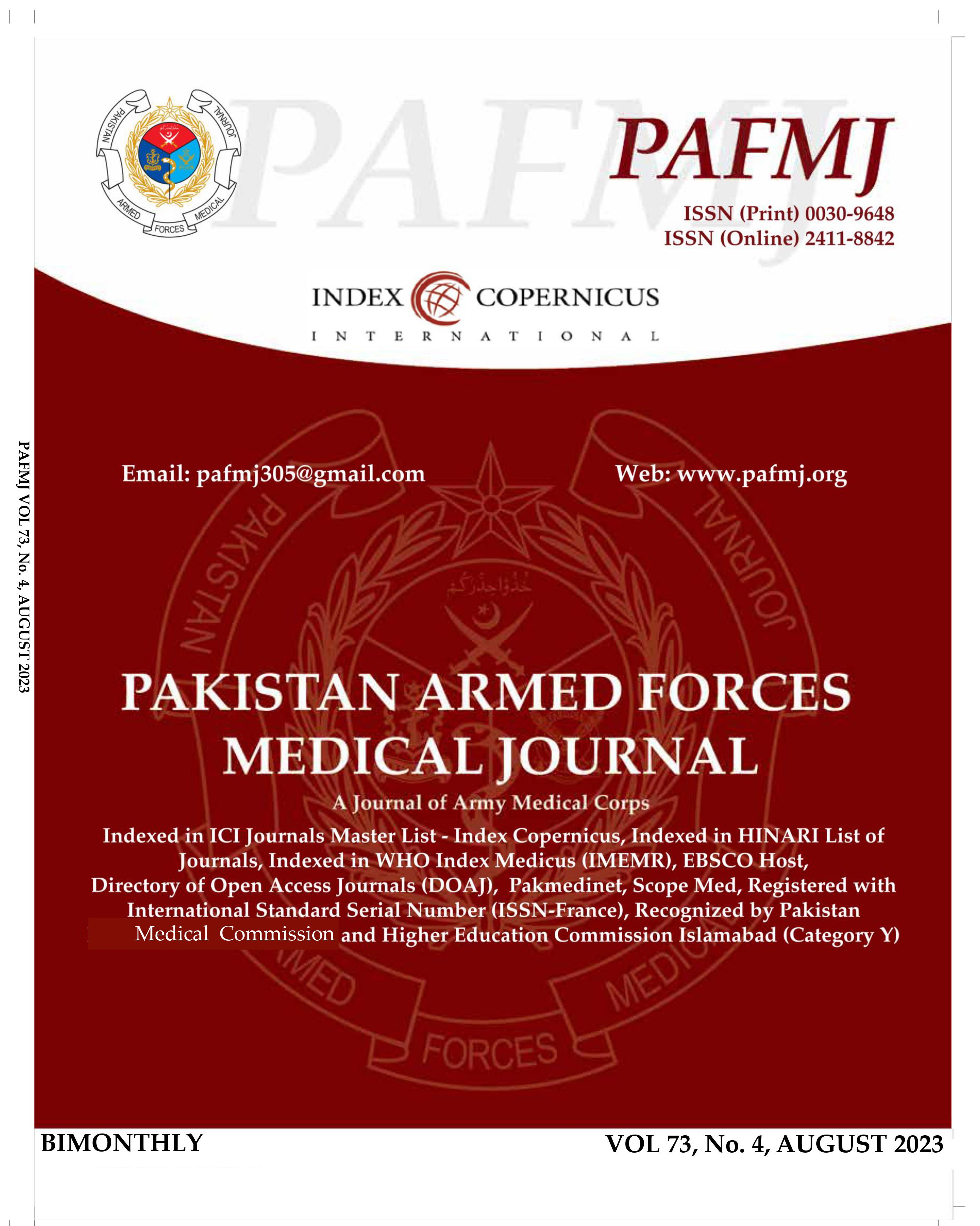Efficacy of Perineural versus Systemic Dexmedetomidine as an Adjuvant to Bupivacaine for Surgical Anesthesia in Axillary Block
DOI:
https://doi.org/10.51253/pafmj.v73i4.8506Keywords:
Axillary block, Bupivacaine, DexmedetomidineAbstract
Objective: To compare the analgesic effect of different routes of Dexmedetomidine when given as an adjuvant to Bupivacaine in the axillary block for surgical correction of radius fracture.
Study Design: Quasi-experimental study.
Place and Duration of Study: Pak Emirates Military Hospital, Rawalpindi Pakistan, from Sep 2021 to Feb 2022.
Methodology: The patients were divided into two equal groups. Group-A (Perineural Dexmedetomidine) and Group B (Intravenous Dexmedetomidine). Group-A received 1ug/kg Perineural Dexmedetomidine along with 30ml of racemic Bupivacaine (0.5%), and Group-B participants received 1ug per kg intravenous Dexmedetomidine after axillary block with 30ml of 0.5% perineural racemic Bupivacaine. The mean duration of analgesia was the primary outcome, and adverse outcomes and sedation were the secondary outcomes.
Results: The duration of analgesia was greater in the perineural Dexmedetomidine Group, with a mean duration of 610.20±29.92 minutes in comparison to the systemic Dexmedetomidine Group, which was 449±39.010 minutes, with pvalue<0.001. Numerical rating scores were higher, and sedation scores were lower in the perineural Dexmedetomidine Group,
making it a safer choice.
Conclusion: Perineural Dexmedetomidine is superior to intravenous Dexmedetomidine when used as an adjuvant to Bupivacaine in axillary brachial plexus block. It prolongs analgesia and is a safer alternative to intravenous Dexmedetomidine as an adjuvant.















